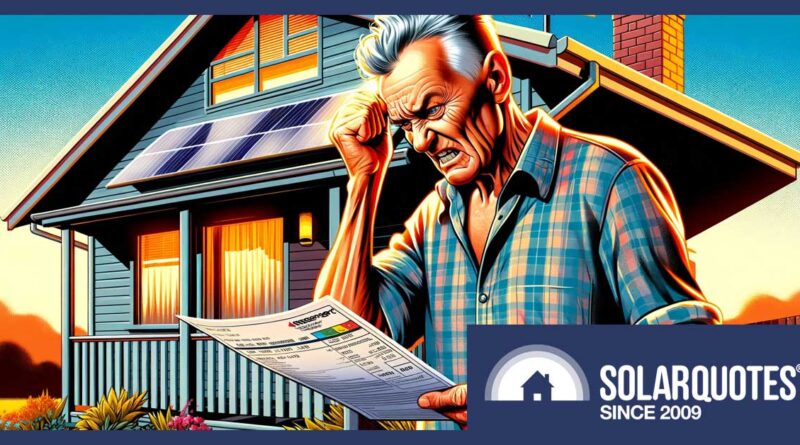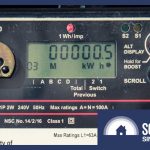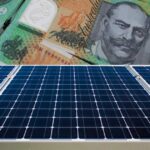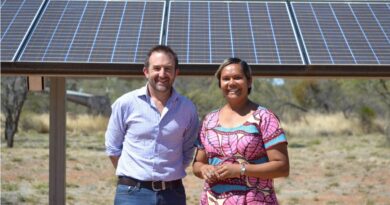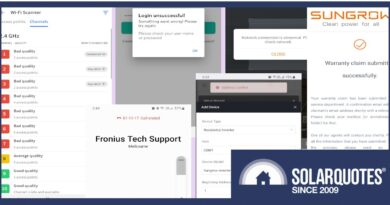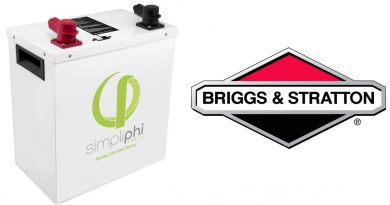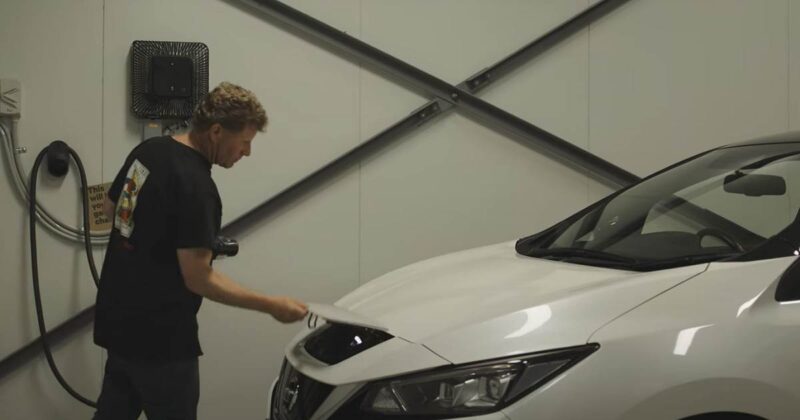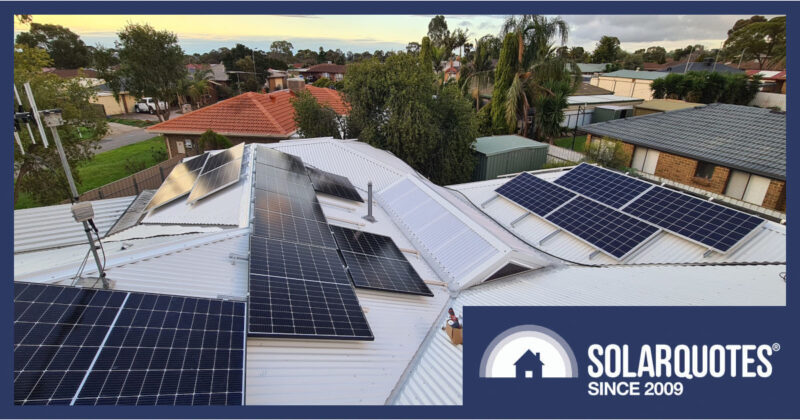“THEY’RE STEALING MY ELECTRICITY!” The Truth About Feed-in Tariffs
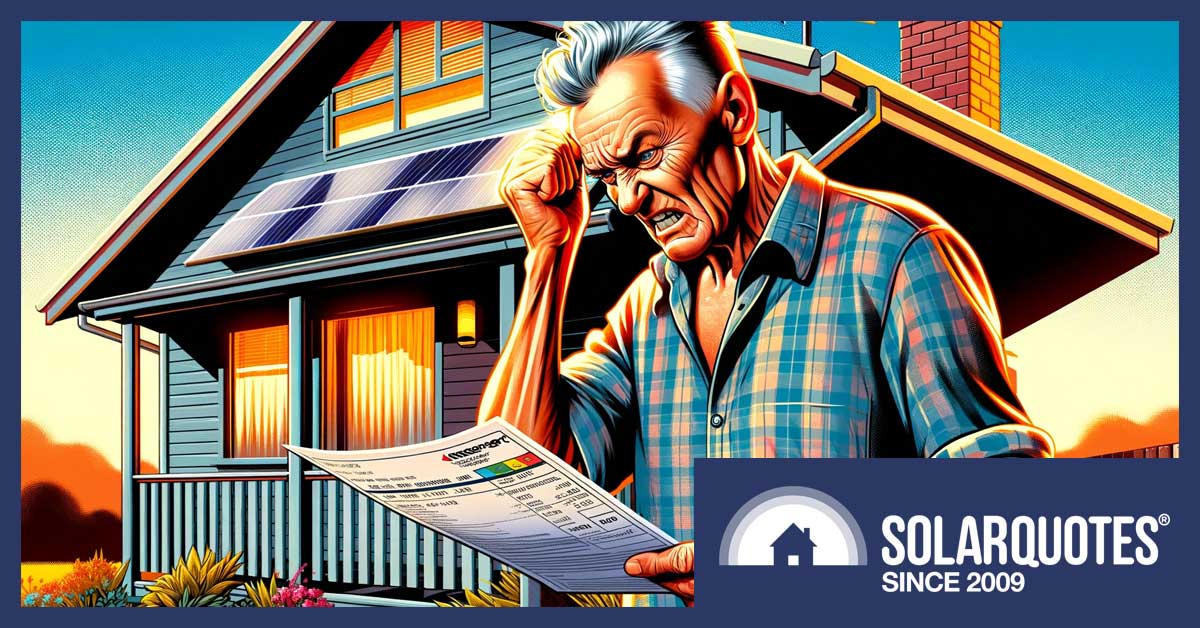
For some time, I’ve been both amused and increasingly disappointed by how people perceive solar feed-in tariffs.
I understand their concerns, but it’s disheartening how many lack critical thinking skills. And let’s not even start on a media landscape that often forgoes nuance for clickbait. The complexity of energy economics doesn’t fit into a headline.
Unfortunately, the increasing gulf between export tariffs and import tariffs is leading to some extreme anger and behaviour…
The Comments Section Blues
We have a case in point from an irate customer—whose comment remains unpublished1
Exhibit A:
I installed solar 6 years ago, The installer connected it to the analog meter, saying it will go backwards when it goes to the grid & forward as I use the power mainly at night, it always hovers a bit over a bit below, has not changed much in 6 years, At 1st AGL “Criminals” used to pay me BTW I will “NEVER” get a Dumb meter ! Now they refuse to recognise my solar, But THERE IT IS ON MY ROOF ! hahaha, They estimate it right, my last bill was $9600 LOL
So they are using power I produce from the sun, “STEALING” then they want to charge me for their “THEFT” Double dipping I,d say. So called smart meters are Dumb, they steal your power & change the value of export & import, with your digital meter, to their benefit, thankyou stupid, AGL just made 7 billion last year, oh theres a power shortage, Lmao WAKE UP, Stick with your honest Analog.
I wonder if this gent criticises youths publicising misdemeanours on TikTok? All the while being blissfully unaware that the penalties for electricity theft look like his electricity bill but with many more zeroes attached.
Ever More Complex Tariffs Don’t Help
The electricity retailers have weaponised complexity in the hope that people will just give up making comparisons and take whatever deal is on offer. There are percentage discounts, daily charges, subscriptions, memberships, block pricing, TOU, feed-in, shoulder, peak, off-peak, controlled load, solar sponge, free time…
Thankfully, we have services like Bill Hero and Solar Analytics, which can look at your bills and calculate the cheapest tariff for you. I wholly recommend them because if even Bruce Mountain, a literal professor in energy economics, can’t get himself a good deal, then – without help -nobody can.
Flat Rate Tariffs Will Eventually Disappear
Flat rate usage tariffs and access charges are from the steam era, when meters were clockwork and generators coal-fired. Australians are increasingly being forced on to Time Of Use Tariffs with peak, shoulder, off-peak, and sometimes super off-peak rates depending on the time of day.
In the digital age, we’ll use most energy when it’s cheap and abundant. Demand has always followed daylight when people are awake, and that handily coincides with solar energy, so we need to adjust our thinking along with our hot water services. The surplus of solar has now made daytime rates the cheapest of all2.
Many find variable electricity pricing baffling, but there’s no shortage of examples proving that people often miss the obvious. For instance, inner-city parking may cost $30/day, but it’s free after 7 pm. Public transport costs half as much between 9 am and 3 pm. So, consider how the price of energy changes throughout the day.
Variable-rate feed-in tariffs are also becoming more popular. You can’t expect to push your solar electricity into a flooded market and demand a premium price. Some retailers will pay a significant feed-in tariff after 3 pm, which can be lucrative for big systems, especially if they face west.
Why Is Retail Electricity Pricing So Much More Expensive Than Wholesale?
The average wholesale power price in SA for October was 1.512c/kWh, while flat-rate retail deals cost around 45c/kWh. What gives?
Bulk energy is bought at bulk prices on long-term deals. Retailers buy an average amount on a forward contract, and if there’s exceptional demand, they can turn to the volatile spot market to top up.
Of course, if there’s an unexpected war, flood, fire, or plague that disturbs the supply (or demand side), the pricing impacts are delayed until the new contracts in the new year flow through to us, the end users. And when the recent price hikes hit, many smaller retailers found themselves unviable, they pulled up stumps and left us with less retail competition.
There are a lot of other expenses involved. The networks are big and stringy and cost a bomb to maintain. Copper losses on hundreds of kilometres of poles and wires means just 6% of the heat created by burning coal makes it through to your toaster.
Regional Queensland’s Feed-In Tariff Win
Energy Queensland has been ordered by the minister to use an avoided cost model for calculating regional feed-in tariffs because the energy you generate is very efficiently used by your neighbour’s toaster. So, while retailers have costs to hedge against extortionate spot prices, and those annoying call centres must be staffed, they now pay $0.1344c per kWh for Regional Queenslanders’ exported solar energy.
Premium Feed-In Tariffs Are History
44 cent rolled gold feed-in tariffs were a boon. The state-based incentives established a whole new industry, along with the federal Solar Homes and Communities Program (SHCP $8000 grant). Between them, these programs created the demand that trained workers, built businesses, taught skills, and ultimately made solar cheaper for everyone. It was a smart use of what some call middle-class welfare, channelling capital from those who could afford it to benefit everyone else.
However, early adopters may have been overcompensated, as the rapid fall in solar PV prices wasn’t predicted. Some argue that cashing in remaining feed-in tariff schemes now could encourage those who can still afford it to invest in more solar and batteries before 2028.
While feed-in tariffs helped get people thinking about energy and changed their behaviour, giving them a sense of entitlement hasn’t helped as the transition gathers pace.
Is Solar Worth It With Lower Feed-In Tariffs?
Forget about feed-in tariffs; the real savings with solar are using that solar energy in your own home. That’s why I always recommend filling your roof with as much solar capacity as possible. A larger system offers more energy throughout the day, reducing your reliance on purchased electricity. If there’s a surplus, that’s a nice problem to have. But when the sun is low in winter, you’ll appreciate the extra energy for running a reverse cycle air conditioner to heat your home.
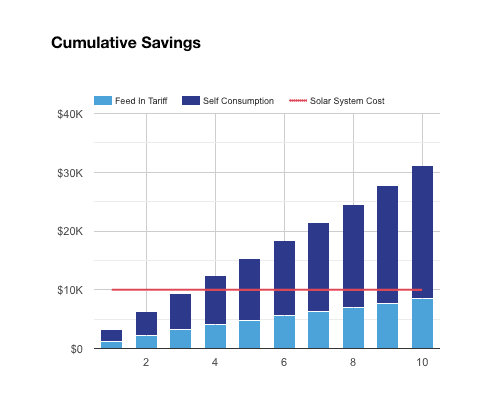
A 10kW solar system in Adelaide with 30% self-consumption, 45c usage and 10c Feed-In. You can see the savings are dominated by self-consumption. From our solar calculator results.
The Battery Equation: Friends With Benefits
While solar batteries are an expensive way to use your solar power, they offer unique advantages. Every day, you’ll make a little return on the battery investment, and you can avoid being violated for up to 75 cents per kWh during peak times.
Where batteries provide unparalleled comfort is keeping the lights on. Though the grid is 99.998% reliable, it might only take one car crash down the street to defrost your freezer or kill your pet fish. Events like that can be a priceless return on investment.
You Already Own A Battery
The average hot water service represents 30% of your home energy use, and while it might leak some heat, it’s cheap storage for 13kWh. A recent study by UTS Sydney tells us that electrification is more important than outright efficiency, so while a heat pump hot water service uses 75% less electricity, using a conventional element to heat water with surplus solar is still a great idea compared to burning gas.
We’re All In This Together
When exporting power, you’re reshaping the future, bringing democracy to energy. The power industry isn’t stealing your electricity. Even if you’re paid nothing, you’re driving the price down for your neighbours and making life hard for the corporations who own the coal burners. For far too long, they have been polluting the air and water scot-free, so it’s about time things changed.
Even better is if you can stick it to the oil industry by storing electricity in your EV.
Your house can be a tiny-scale version of the broader grid. Build excess renewables, put timers on your appliances, or divert kilowatt-hours to storage and use them later, but generally try to have vast capacity on the roof so that even rainy days will power your fridge and lights. The vacuuming, dishwasher & clothes dryer can always wait.
Footnotes
- When people caution you to avoid the comment section, remember, dear reader, we’ve already cleaned it up for you. Some of the stuff we cut is truly mind-boggling. ↩
- The cheapest wholesale rates are daytime, but in coal-fired states like VIC, QLD and NSW, the cheapest retail prices are still overnight ↩
Original Source: https://www.solarquotes.com.au/blog/stealing-electricity/

